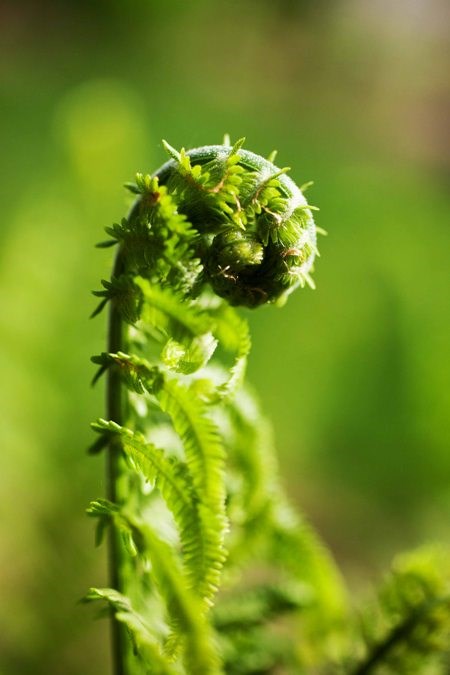Spring is officially here from the perspective of the calendar, but in reality it is not evident this year where I am located. Last year at this time, it was a different story, with the crocuses already in full bloom and the gardens growing.
Although it is a bit early where I am for "fiddlehead season" it may be in full swing where you are, hence the focus on fiddleheads. They are basically the unfurled new leaves of a fern and you may be fortunate enough to have several types of ferns growing around where you live. Depending on type, they vary in size, shape and edibility.
Ferns in general and fiddleheads in particular are in my opinion one of the coolest signs of spring. They appear along river and stream banks, along the edges of water bodies, swamps and marshes. The term "fiddleheads" describe the finely crafted head of a fiddle and in actuality is the common name of a variety of different ferns: The most common fern that is consumed across Canada is the ostrich fern (Matteucciastruthiopteris). Please note that the bracken fern (Pteridiumaquilinum) is generally not consumed as is often associated with poisoning of cattle, sheep and sometimes horses. Please also note that all ferns contain varying amounts of carcinogenic compounds, so should be consumed in moderation. Uncooked fiddleheads contain thiaminase which is a vitamin B depleting enzyme that is destroyed by heat making them safe to consume.
When you find the ferns, harvest the clusters of fronds when they are about 2.5 to five centimetres above ground. Brush off the papery scales with your hands and then rinse the fronds thoroughly to ensure any remaining scales and soil is washed off. Please be aware that fiddleheads can cause food poisoning if they have not been properly cleaned, prepared, cooked or stored.
Fiddleheads are loaded with iron and potassium and are easy to cook. Do not overcook them as their delicate flavour and texture is best accentuated by simple cooking. Some prefer them with a drizzle of butter, olive oil and a squeeze of lemon. Enjoy fiddleheads steamed, boiled, sautéed, stir-fried or baked, although if trying them for the first time, simply sautéed in butter or oil with a tiny bit of seasoning is wonderful. When they have become more common in your diet try them in soups, on pizza, in scrambles, pasta sauces or, for a flavour change, try them tossed with diced tomatoes and lemon-garlic vinaigrette.
As the season to enjoy fiddleheads is brief, you may wish to put some away for later use. To freeze, remove scales and wash thoroughly. Boil in a small amount of water for two minutes. Drain and let cool. Pack in freezer bags with as much air removed as possible.
Please note that consuming raw or undercooked fiddleheads may cause diarrhea, nausea and stomach upset. Every year, many Canadians will get food poisoning from fiddleheads that have not been stored, prepared or cooked properly.
If you are growing fiddleheads, plant them where they will receive partial shade and protection from strong, drying winds. They prefer to have a rich soil that has been acidified with compost and that has been amended to a depth of at least 25 centimetres. Give them enough room to grow to their mature size. They prefer to be evenly moist throughout the growing season. In fall remove the foliage down to the base.
Happy spring and may your spring is filled with spring delicacies from the garden and beyond.
Hanbidge is the Lead Horticulturist with Orchid Horticulture. Find us at ; by phone at 306-931-4769; by email at [email protected]; on facebook @orchidhort and on instagram at #orchidhort.




